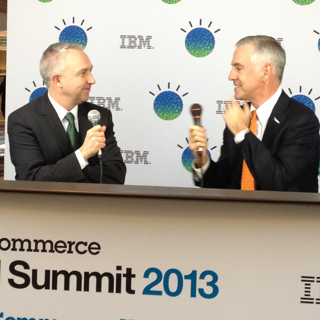 Gripping tightly to the lifeless plastic handle I could only muster a fainthearted “hit it” to the speedboat skipper 50 feet away. This was to be my third and final attempt to rise above my skis and frankly I was already drained and shivering. The first effort had ended in a face plant with skis scattered across the surface like an old-fashioned yard sale. The second was only slightly less ugly. My already formulated excuse was going to be that the boat was too weighed down with passengers to yank my sad ass above the surface. Fortunately, the third time was the charm as I kept my weight back as instructed and let the skis do their magic. Once elevated, I hurled myself out of the wake regaining some semblance of the athletic confidence I usually take for granted and romped around the lake like a champ.
Gripping tightly to the lifeless plastic handle I could only muster a fainthearted “hit it” to the speedboat skipper 50 feet away. This was to be my third and final attempt to rise above my skis and frankly I was already drained and shivering. The first effort had ended in a face plant with skis scattered across the surface like an old-fashioned yard sale. The second was only slightly less ugly. My already formulated excuse was going to be that the boat was too weighed down with passengers to yank my sad ass above the surface. Fortunately, the third time was the charm as I kept my weight back as instructed and let the skis do their magic. Once elevated, I hurled myself out of the wake regaining some semblance of the athletic confidence I usually take for granted and romped around the lake like a champ.
Had you not seen my false starts or heard any of the coaching I received before liftoff, you might have thought it was just another effortless and solitary accomplishment by an experienced (read middle aged) jock. [Stay with me now as I deftly transition to the real story here!] This is not unlike the experience most of us have when seeing a finished product or a successful marketing campaign. Typically, we don’t bother to ask about the team behind the product or about any of the missteps along the way. As consumers, we take all that for granted as we should. But as marketers, we can’t afford such incuriousness. We have to go deeper. We must look under the surface. We must understand the process behind the success.
And yes, that’s exactly what I did during a recent conversation with Kieran Hannon, the CMO of Belkin, the makers of Belkin, Linksys and Wemo products. Kieran, as you may remember is featured in my book, The CMO’s Periodic Table under the element “Storytelling.” This time we went even deeper, covering his impressive three-year plan, Belkin’s inclusive product development process, influencer marketing and more. While Kieran appears not to have had too many wipeouts along the way, what you will discover is a marketer whose seemingly effortless glide is wholly the result of determination, collaboration and well earned experience.
Drew: One of the things that you mentioned to me was your three-year plan. Where are you on that plan, and how is it coming along?
Kieran: We’re now going into year four. Year 1 was focused on the organization itself. It was aimed at educating our marketing teams across the globe, helping them understand their roles, the needs in the markets, and the priorities of the company. Essentially, Year 1 was building a team that could deliver global marketing programs and lead that development. Year 2 was aimed at aligning the region and the corporate goals because we were decentralized at that point. In Year 2, the global marketing teams were supporting all three brands. Some of the team members were dedicated to a brand but in a lot of other respects, the teams worked across multiple brands. For instance, the CRM team has worked across all brands. Now, CRM is embedded into each brand, they are in control of their own destiny and their needs as a great example. Additionally, we had designers sitting in 11 different functional groups around the world. Now, all designers are in one group in each brand, so there is a single management structure for each brand. Those are just a few examples of streamlining, and bringing focus and prioritization around the world.
Drew: What was the result of this plan?
Kieran: As a premium brand, Belkin is doing very well in a somewhat commoditized market. Our focus on highly differentiated products and experiences is making a big difference. For example, when you travel you’ll see Belkin in all the Hudson News stores around the US and around the world. For Los Angeles International Airport (LAX), Hudson came to us and asked if they could build a Belkin store because travelers find the brand so compelling.
At CES, one of our products, the Valet Charge Dock for the Apple watch and iPhone was voted Best in Show. That’s another example of the design innovation Belkin is reknowed for — and it’s been a tremendous success.
Drew: Let’s talk about product innovation and marketing and where product development sits relative to marketing. How do you ensure that there’s a marketing idea built into the product?
Kieran: Sure. Let me tell you about ScreenCare +, a new applicator system that we launched in all Apple stores. That is not just a product; it’s an experience. The product management team, the industrial design teams and the marketing teams worked very closely in the development of that program from embedded testing to the testing of different formats for training of store specialists. We have what’s called our “E2” planning processes with different gates and as a product goes from formation into development, marketing and other groups provide input and feedback. This insures alignment throughout our exciting and rewarding process.
Drew: It really is amazing how Wi-Fi is at the center of everything, the enabler of the Internet of Things.
Kieran: It’s such a key enabler. A lot of people have so many devices at home, they don’t realize they’re probably sitting there with a three or four-year-old Wi-Fi router and it’s wrecking the experience of these great devices that they bought. What’s worse than when you want to go online in the evening with your family to stream a movie, and all you see is buffering? A lot of the issues are because you have an old router and there are another ten devices connected to the Wi-Fi that are impeding the ability to deliver that signal. To help our customers have a better experience, you can now prioritize within the Linksys system your Netflix streaming device and de-prioritize other devices.
Drew: How are you incorporating influencer marketing into your overall strategy?
Kieran: We’ve done a number of influencer programs over the years and they’re very target based. We spend a lot of time ensuring that we get the right type of influencers that can really amplify our cause. Importantly, we let them drive the project. We just want our influencers to express their feelings about the brand, the products and the experience in a way that’s most meaningful to them. Full transparency is pretty critical and we’ve been very pleased with every influencer program we’ve done.
Drew: What are the pitfalls of influencer program?
Kieran: I think the fundamental pitfall is trivialization, either trivializing the audience or trivializing the role the product plays. It doesn’t mean that you heighten the role of the product in that experience but you don’t want to trivialize it either. So, I think it’s best to be authentic throughout the partnership.
Drew: I think one of the challenges clients encounter is evaluating the success of influencer programs relative to other activities. How do you evaluate these programs?
Kieran: It’s the crossover between paid and earned media that’s really powerful and puts the icing on the cake. We have both consumers and retail partners as our audience, and how they talk about and relate to our brands is very important. We think about that as we build up these influencer programs.
Drew: As a company that introduces innovative products and services, how do you make sure your media and your marketing is innovative? Is the medium the message sometimes?
Kieran: Oh, absolutely. I’ll give you an example. A great program that we do with Hulu is at the point of buffering, we deliver a message to people that you don’t have to have that experience – you just need a more powerful router. So, the medium can absolutely be the message. On the Belkin side, we’ve done some great programs with other mobile platforms that really bring to life what you’re doing at that moment in time. So yes, the medium is equally important as the message in a lot of cases.
Drew: The geo-fencing program you did is particularly innovative. Can you talk a little bit about that?
Kieran: Yes, we are doing an interesting program with geo-fencing where we understand when the consumer is in the proximity of a retail partner and we can share with them the relevant personal message to that proximity.
Note: This is part 1 of my interview with Belkin’s Kieran Hannon, part 2 will appear on Social Media Explorer soon.
